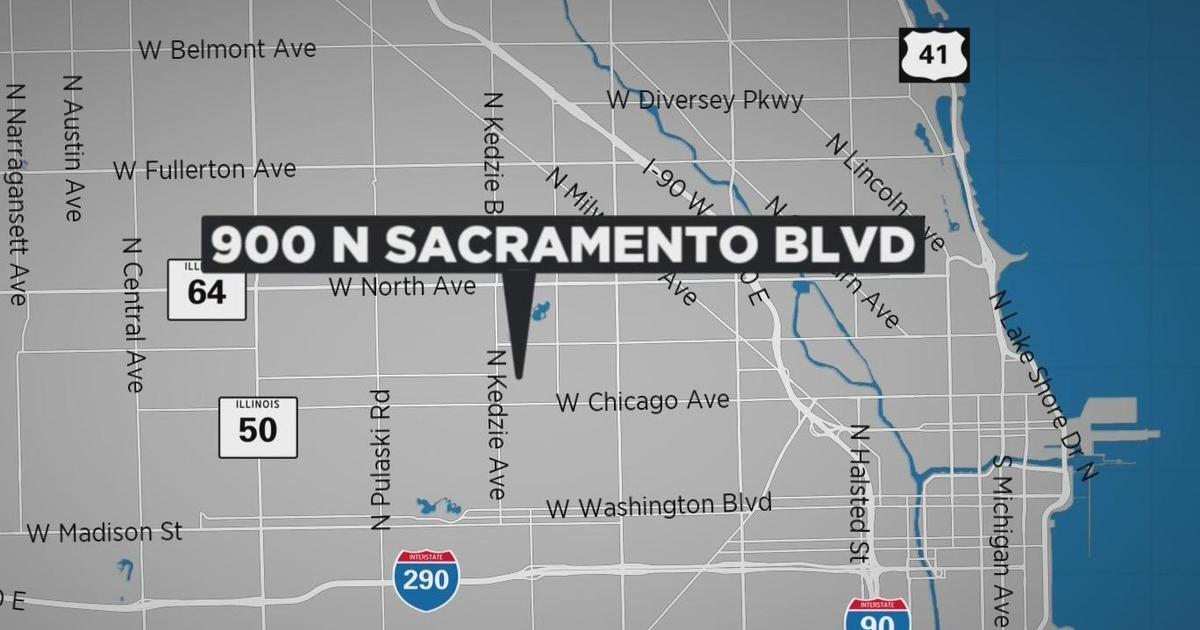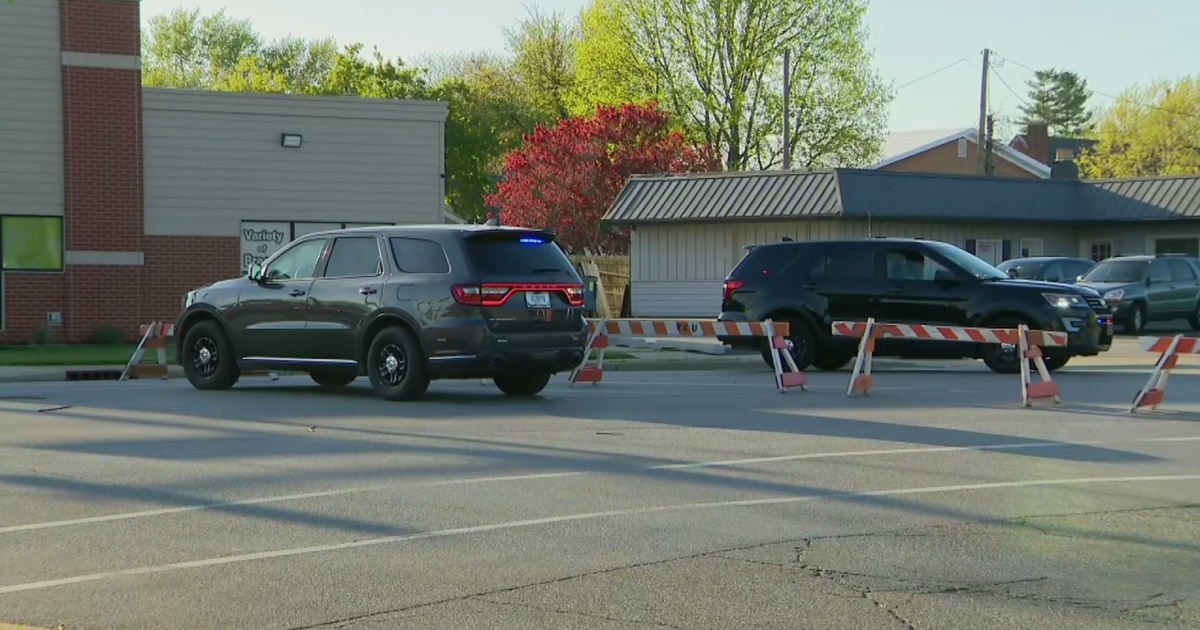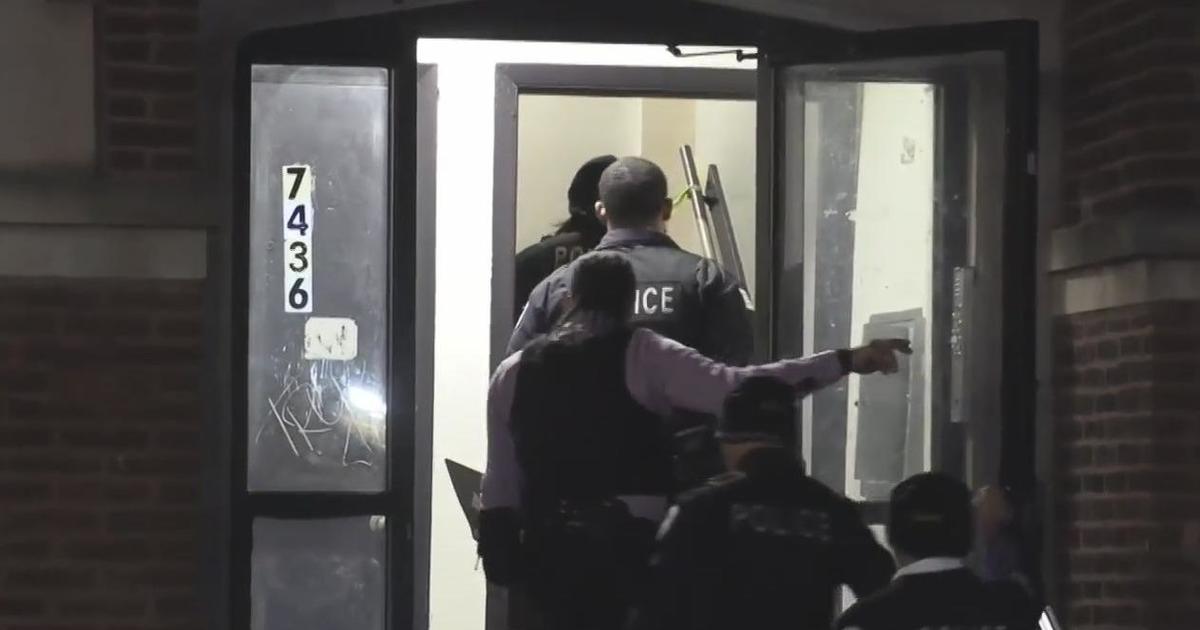Architecture Titan Helmut Jahn Killed In Bicycle Accident In Kane County
CHICAGO (CBS) -- Even if you didn't know Helmut Jahn's name, you certainly know the mark he left on Chicago's skyline.
The architectural titan died this weekend at the age of 81, after he was struck by two vehicles while riding his bicycle.
Police said Jahn was killed in the accident around 3:30 p.m. Saturday in Campton Hills, a Kane County suburb near St. Charles.
Jahn was riding his bicycle north on Old Lafox Road approaching Burlington Road and failed to stop at the posted sign, police said. He was struck by a vehicle heading east on Burlington Road and then struck by a vehicle heading west on Burlington Road.
Police said Jahn, of St. Charles, was pronounced dead on the scene.
As CBS 2's Marissa Parra reported Sunday, Jahn was a man who believed in transforming the ordinary into the extraordinary. And love it or hate it, his most widely talked-about piece – the James R. Thompson Center at 100 W. Randolph St. – was unlike anything we'd ever seen when it was unveiled.
It remains iconic more than three decades later, though its future is in doubt.
Jahn never retired. At the age of 81, he was still working on new projects and new designs – a true testament to his love for the craft.
The name Helmut Jahn may not ring a bell for everyone, but every Chicagoan lives and breathes his work.
"Certainly a light was lost when he passed away," said architect Lee Bey.
Jahn's first major project in Chicago for which he was the principal architect was the Xerox Center, now known by its address of 55 W. Monroe St. The building was completed in 1980.
As described by Architect Magazine: "The 45-story office tower has an elegant form, with a rounded corner that culminates in a curving mechanical penthouse and a two-story street front that undulates inward to create a covered space at the building's two entrances. A flush curtainwall echoes the tower's simple form. Large, white, aluminum-and-glass panels extend from the sidewalk to the parapet, with half-height glazing on three sides and full-height windows facing the plaza across the street."
Jahn also designed the United Airlines Terminal One at O'Hare International Airport, completed between 1985 and 1988. The terminal is known in particular for its tunnel that connects two concourses, where Michael Hayden's kinetic neon light sculpture "Sky's the Limit" is on display overhead to the accompaniment of modern versions of George Gershwin's "Rhapsody in Blue" – the United Airlines theme music since the 1980s.
In a tribute to Jahn, journalist Brian Boyer posted a selfie in that corridor on Sunday and invited others to do the same.
In Chicago, Jahn also designed the glass-curtained 1 S. Wacker Dr. building (1982), the O'Hare Blue Line Terminal (1984), the Accenture Tower (formerly the Citigroup Center) that rises above the Ogilvie Transportation Center at 500 W. Madison St. (1987), the 120 N. LaSalle St. building across from City Hall (1992), the high-rise condo tower at 600 N. Fairbanks Ct. in Streeterville (2007), and the glass-domed Joe and Rika Mansueto Library next to the Regenstein Library at the University of Chicago (2011).
Another residential high-rise designed by Jahn is now under construction at 1000 S. Michigan Ave. in the South Loop.
His genius was turning everyday places into an experience – and few Chicagoans knew his work better than Bey.
"And of course, more than anything, his work at O'Hare - the passenger terminal - this concourse; this way through the airport recaptures that sort of sense of wonder about getting in an airplane and being anyplace in the world in just a matter of hours," Bey said.
Jahn was born in 1940 near Nuremberg, Germany.
"He had this great, dramatic accent still in his voice," Bey said. "Spoke low - I can remember sometimes having to lean in to hear him when he was making a good point."
But there was nothing soft about his work. The bold artist, nicknamed "Flash Gordon," was unafraid to push the envelope.
Jahn came to Chicago in 1966 to study under the renowned architect Ludwig Mies van der Rohe at the Illinois Institute of Technology.
He worked with architect Gene Summers to design the McCormick Place Lakeside Center, which was constructed between 1968 and 1971 to replace the original McCormick Place after that building was destroyed in a 1967 fire.
Beyond Chicago, Jahn also designed numerous other iconic structures around the country and the world, including the Liberty Place complex in Philadelphia, the 50 West St. condo tower in Lower Manhattan in New York City, and the Sony Center at Potsdamer Platz in Berlin.
Jahn's most controversial work to date was unveiled in 1985. That, of course, was the out-of-this-world state government building we know as the Thompson Center.
"This is at a time that, you know – we're 10 years out of Watergate; youu know public corruption - after smoke-filled rooms and things behind cubby holes and cubby rooms - this was an idea to take government and open it up," Bey said.
Indeed, when the Thompson Center opened in 1985 as the State of Illinois Center, the great massive open atrium inside and its floors of open offices were meant to pay tribute to transparency in government.
Travel back in time to its unveiling, and you'll find banners running the height of the building, proudly proclaiming that it was "a building for the year 2000."
"We had seven schemes, and in one day we had to present it to the governor," Jahn said of the project in recent years. "I had to not favor any scheme."
The late CBS 2 reporter Mike Parker covered the opening of what would later be known as the Thompson Center in 1985.
"The great architect Frank Lloyd Wright once said that a doctor can bury his mistakes; an architect can only plant vines," Parker said in a closing standup shot for his report on the opening. "Perhaps by the year 2000, we'll know if the state is planting vines around here."
There were no vines climbing on the Thompson Center in 2000, and there still aren't now. But there is a worry that it might not be standing much longer.
There were problems at the building from the beginning. Custom double-pane glass had to be scaled back to single-pane. That led to hot summer and cold winter office spaces that the building's heating and cooling system has struggled with.
Drainage issues led to the rusty deterioration of some of the building's pillars, and as stone cracked and fell, unsightly scaffolding was placed around the building for extended periods.
"Had the state taken care of it, it would be brighter. We'd see it differently now," Bey said. "But they didn't."
Jahn once said the mark of an architect was if it could stand the test of time. Decades later, his work has done just that.
But days before he died, State of Illinois officially put it up for sale just last week.Gov. JB Pritzker has put out a request for bidders to buy the building at 100 W. Randolph St.
The governor's office said deferred maintenance and delayed improvements to the building have caused the cost of repairing the Thompson Center to more than $325 million. That cost could balloon to $525 million by 2026.
Bey expressed hope that Jahn's passing will mean the building will be saved.
"Certainly, tragedies like this have a way of putting an architect's work in a different perspective," Bey said. "I do hope that it does trigger some kind of re-investigation into his work - with this building, and other buildings as well."
Jahn has gone on record in the past saying he wanted to see the Thompson Center repurposed rather than demolished, and introduced a proposal for doing so in 2017.
Jahn again said in an interview with F. Philip Barash for Newcity published days ago that he would be devastated if the Thompson Center were torn down.
As Barash quoted Jahn: "'If someone bought this for enough money and tore it down, I don't know what I would do.' Long pause. 'I wouldn't shoot him.' Longer pause. 'But I'd feel like it.'"
Mayor Lori Lightfoot also honored Jahn on Twitter on Sunday, writing: "Jahn was one of the most inventive Chicago architects whose impact on the city - from the skyline to the O'Hare tunnel - will never be forgotten. His architectural footprint will be felt & seen across the globe for generations to come. I extend heartfelt prayers to his family."




